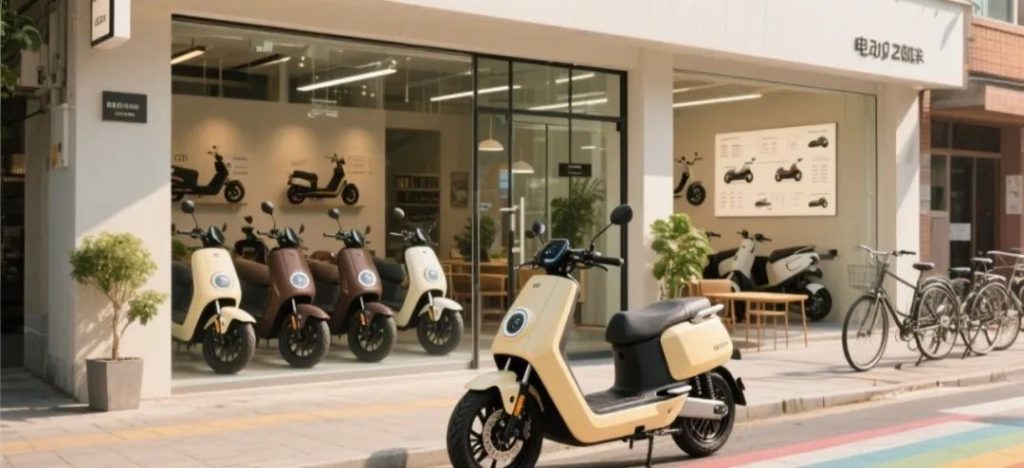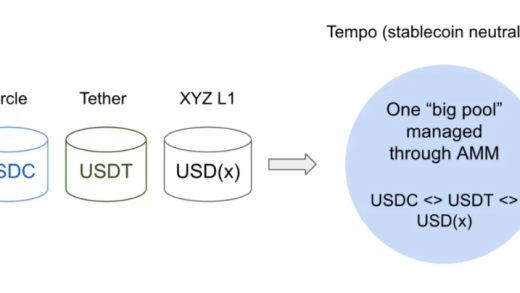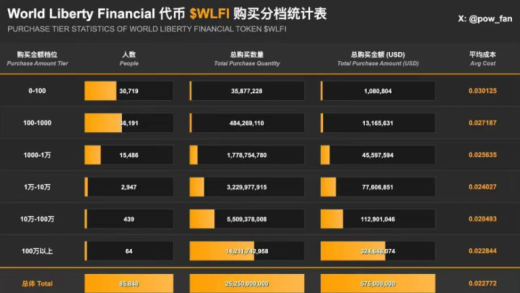
Positive Reviews: Intelligence Drives the Upgrade of the Two-wheeler Industry, Enhancing Both User Experience and Industrial Value
The wave of intelligence in two-wheeled electric vehicles is not simply a case of “following the trend.” Instead, it is an inevitable choice for the industry to seek new growth points in a saturated market and promote industrial upgrading. From the user experience to the industrial value, intelligence has injected new vitality into this traditional means of transportation.
First of all, intelligence has significantly improved the user’s riding experience and safety guarantee. The functions of traditional two-wheeled electric vehicles were limited to “getting around,” but today’s smart models have taken “convenience” and “safety” to a new level through technological innovation. For example, functions such as Bluetooth unlocking and APP remote control have solved the pain points of users forgetting their keys or having difficulty finding their vehicles; functions like navigation projection and voice activation have made the riding process more efficient. More notably, some models are equipped with millimeter-wave radars and visual assistance systems (such as the Ninebot AI visual assistance system), which can achieve automotive-grade safety functions such as blind spot monitoring and collision warning, greatly reducing the riding risk. The implementation of these functions has transformed two-wheelers from “basic means of transportation” to “intelligent travel companions.” Especially for commuters who use electric vehicles frequently, the upgrade in experience brought about by intelligence is truly tangible.
Secondly, intelligence provides a key solution for the industry to break through the low-margin dilemma. The two-wheeled electric vehicle industry has long faced problems such as “mainly assembly production, serious product homogenization, and limited premium space.” Data shows that the average unit price of electric bicycles of traditional brands like Yadea is only 1,347 yuan per vehicle, with a gross profit margin of about 15.2%. In contrast, for Ninebot and Niu, which are labeled as intelligent, the average ex-factory prices reach 2,774 yuan per vehicle and 3,200 yuan per vehicle respectively, and the gross profit margin has increased to 21.1%. The core of this gap lies in the added value of products brought about by intelligence. By equipping vehicles with intelligent hardware (such as sensors and cameras) and software services (such as APP ecosystems and OTA upgrades), manufacturers have successfully transformed from “assembly plants” to providers of “intelligent hardware + services.” This not only increases the profit per vehicle model but also opens up a second growth curve through subsequent software renewals and function upgrades. This transformation of the model has promoted the industry to shift from “price war” to “value war” and accumulated more resources for technological R & D and product innovation.
Finally, intelligence has accelerated the integration of two-wheelers with the new energy ecosystem and laid the foundation for future technological expansion. Currently, the intelligence of new energy vehicles has entered the stage of “full-domain intelligence.” Although the intelligence of two-wheelers is limited by volume and cost, it has taken a differentiated path of “small but refined.” For example, the unmanned intelligent driving technology demonstrated by Tailing, although not fully mature, can already handle complex road conditions and automatic reverse parking; Ninebot’s AI visual assistance system can achieve functions such as driving recording and collision warning through multiple cameras. These technological explorations not only increase the “technological content” of two-wheelers but also lay the groundwork for scenarios such as vehicle-road collaboration and shared travel. In the future, with the popularization of 5G and Internet of Things technologies, two-wheelers are expected to become an important node in the “intelligent travel network,” complementing cars and public transportation and further amplifying their advantages in short-distance travel.
Negative Reviews: The Premium of Intelligence Deviates from Core User Needs, Intensifying User Costs and Market Risks
Although intelligence has injected vitality into the industry, the misalignment between its excessive upgrade and the actual user needs, as well as the resulting cost pressure, are causing two-wheeled electric vehicles to gradually deviate from the essence of a “universal means of transportation,” and may even trigger market differentiation risks.
Firstly, the “practicality” of intelligent functions is questionable, and the price premium far exceeds the real user needs. The core value of two-wheeled electric vehicles lies in “convenience, economy, and efficiency,” but the current intelligent upgrade is constantly adding “non-essential” functions. For example, entertainment functions such as in-vehicle audio and Bluetooth connection to the vehicle system have a very low actual usage rate for workers whose main usage scenario is commuting. Although some high-end models are equipped with millimeter-wave radars and multi-camera systems, which improve safety, the cost is ultimately passed on to the users, causing the price of entry-level smart models to rise from 3,000 yuan to 6,000 yuan or even higher. The case of user Wang Yu is quite representative. He originally budgeted 3,500 yuan to buy a practical model, but finally bought a smart vehicle for 6,500 yuan because “he couldn’t understand the functions but was forced to pay a higher price,” and the vehicle had “no other practical functions except for unlocking and positioning.” This contradiction of “paying for intelligence but not being able to use it” essentially results from manufacturers equating “technology stacking” with “user needs,” causing a serious disconnect between the product value and the user’s expectations.
Secondly, the hidden costs continue to increase, and the user’s “vehicle maintenance” burden far exceeds expectations. Intelligence not only drives up the purchase cost but also creates long-term expenses through “software renewals” and “high-priced repairs.” Take Niu’s RuiZhi VIP service as an example. The annual fee was originally 38 yuan, but now it has increased to 69 yuan. If the user does not renew the service after it expires, they will not be able to use basic functions such as positioning and battery life query. Brands like Yadea and Ninebot also adopt a similar model of “free hardware + paid software,” binding some core functions as “value-added services.” In addition, the repair cost of intelligent components is significantly higher than that of traditional components. The repair cost of a side stand with a built-in sensor is several times that of an ordinary side stand, and the replacement cost of a smart screen is as high as 400 yuan, far exceeding that of ordinary models. These hidden costs have made it difficult for users to afford to maintain the vehicles, which goes against the core advantage of two-wheeled electric vehicles of “low vehicle usage cost.”
Thirdly, the industry’s “high-end” competition may intensify market differentiation and squeeze the demand of mid – and low – end users. Currently, new players like Ninebot and Niu are deploying high – end models priced at over 10,000 yuan with the label of intelligence, and traditional brands like Yadea and Aima are also following suit. The focus of industry competition has shifted from “covering the general public” to “competing for high – spending groups.” However, the number of two – wheeled electric vehicles in use has exceeded 420 million, and the main users are still price – sensitive workers and consumers in the sinking market. If manufacturers overly pursue the premium of intelligence, it may lead to an insufficient supply in the mid – and low – end market. Models without intelligent configurations will be gradually eliminated due to low profits, while the price of intelligent models is beyond the affordability of ordinary users. Eventually, an embarrassing situation will occur where “high – end products cannot be sold, and low – end products cannot be bought.” This market differentiation may not only suppress users’ demand for vehicle replacement but also weaken the universal advantage of two – wheeled electric vehicles in short – distance travel.
Suggestions for Entrepreneurs: Return to the Core User Needs and Balance Intelligent Upgrade and Cost Control
In the wave of intelligence in two – wheeled electric vehicles, entrepreneurs need to avoid the misunderstanding of “intelligence for the sake of intelligence.” They should design products around the real user needs and find a balance between technological innovation and cost control. The specific suggestions are as follows:
Focus on “Essential Intelligence” and Avoid Function Redundancy: The core needs of users when buying two – wheeled electric vehicles are “economy, convenience, and safety.” Entrepreneurs should give priority to developing intelligent functions that are strongly related to these needs. For example, strengthen high – frequency and practical functions such as keyless unlocking, positioning and anti – theft, and battery status monitoring, and reduce in – vehicle audio and other low – frequency entertainment functions. In the field of safety, optimize functions such as collision warning and anti – rollover according to the characteristics of two – wheelers instead of blindly piling up automotive – grade sensors.
Optimize the “Hardware + Service” Model and Avoid Hidden Cost Traps: Software renewals and high – priced repairs are the core pain points for users. Entrepreneurs can explore a model of “free basic functions + optional value – added functions.” For example, make basic functions such as positioning and battery life query standard features, and only charge for personalized functions (such as driving recording and remote control). At the same time, improve the compatibility in hardware design to lower the repair threshold of intelligent components (such as modular sensors and universal screen interfaces) and avoid pushing up the repair cost due to “exclusive accessories.”
Lay out a Hierarchical Product Matrix to Meet Different User Needs: Facing a stock of over 400 million vehicles and a diverse user group, entrepreneurs need to build a hierarchical product matrix of “entry – level – mid – level – high – end.” The entry – level models should focus on “economy and practicality” and retain basic transportation functions. The mid – level models should add “essential intelligence” (such as keyless unlocking and APP monitoring). The high – end models should focus on “safety and experience upgrade” (such as visual assistance systems and long – range battery life). Through hierarchical pricing, it can not only meet the basic needs of workers but also attract high – spending users who pursue quality.
Explore a Differentiated Intelligent Path and Avoid Homogeneous Competition: The intelligence of two – wheelers should not copy the “full – domain intelligence” of cars. Instead, it should develop exclusive technologies based on its own characteristics (small volume and fixed scenarios). For example, for the short – distance commuting scenario, optimize the navigation projection function (such as deeply integrating with map APPs to display the nearest charging points in real – time). For the shared travel scenario, develop management functions such as remote locking and electronic fences. For the sinking market, launch a “low – power – consumption intelligent” solution (such as only retaining basic anti – theft functions to reduce battery energy consumption). Through differentiated innovation, entrepreneurs can find a unique competitive advantage in the highly competitive market.
In conclusion, the wave of intelligence in two – wheeled electric vehicles is an inevitable trend for industry upgrading. Only by returning to the core user needs and balancing technological innovation and cost control can this trend truly benefit consumers and promote the long – term and healthy development of the industry.
- Startup Commentary”Building LLMs: The Knowledge Graph Foundation Every AI Project Needs”
- Startup Commentary”The 17th Year of Tmall Double 11 and the New Map Rewritten by AI”
- Startup Commentary”How to Prepare Your Data for Artificial Intelligence”
- Startup Commentary”Small and Medium-sized Banks: “Cutting the Tail” in Loan Assistance”
- Startup Commentary”The Six AI Giants on Stage: AGI Is No Longer a “Future” Thing”





